Bearded vulture reintroduction
Project background - Short & sweet!
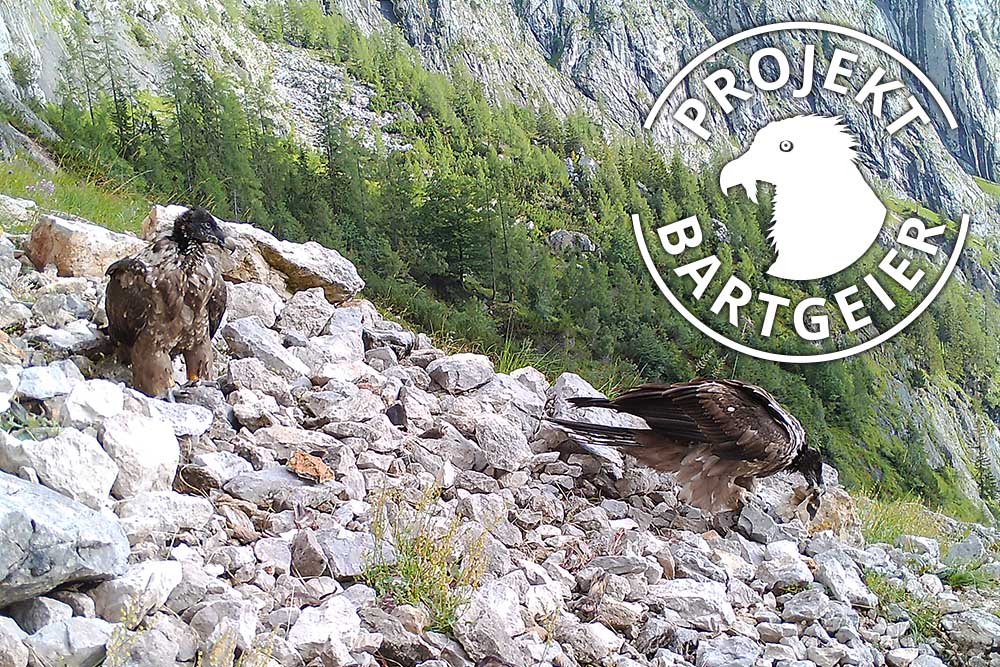
Since the 1970s, enormous efforts have been made to reintroduce the former Alpine inhabitant to its original range.
As part of the European Conservation Breeding Program (EEP) for bearded vultures, around 40 specialized zoos and breeding stations are participating in this international reintroduction project. By 2020, 233 young vultures have already been released in the Alps. Today, the bearded vulture population in the entire Alpine region is estimated at around 300 animals.
Due to the poor development in the Eastern Alps, further reintroductions are needed to improve the very low genetic diversity in the Alpine population and to connect the Bearded Vulture populations in the East and West.
The Berchtesgaden National Park is suitable as an ideal release site in the Eastern Alps due to a number of factors. For this purpose, the LBV, in cooperation with the National Park and the Nuremberg Zoo, will release 2 to 3 young birds in the Klausbach Valley in each of the coming years as part of the EEP - for the first time in the summer of 2021.
The proven "hacking" method is used, in which 2-3 young bearded vultures are brought into a well-protected release niche at the age of approx. 90 days and cared for there. With a survival rate of 88% in the first, and even 96% in the second year of life, this procedure is extraordinarily successful.
The Alpine-wide reintroduction of the once native bearded vulture is considered a unique example in international nature conservation.
Vultures individually recognizable by rings and feather bleaching
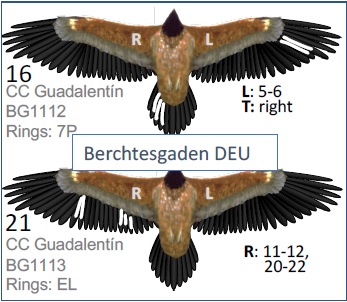
The feather markings (see photo) are individual to each released young bird throughout the European reintroduction project and remain until the first molt, approximately 2 years.
The Bearded Vulture Breeding Center of Guadalentín has set a world record this year by giving birth to 10 Bearded Vulture chicks in the breeding season 2020/21! No other facility in the world has ever managed to produce such a high number of chicks in a single breeding season. This important milestone became a reality thanks to the long-term commitment and strategy of the Junta de Andalucía and the support of the Bearded Vulture Captive Breeding Network.
The first bearded vulture chick hatched in Guadalentín almost 20 years ago, in February 2002 to be exact. Today, 25 years after the center was founded, a total of 102 chicks have hatched and survived in this facility. Currently, Guadalentín produces the most chicks each year and specializes in adopting and raising chicks from other centers and zoos, making it the most important center within the Bearded Vulture Breeding Network coordinated by the Vulture Conservation Foundation (VCF) on behalf of EAZA's Bearded Vulture EEP.
From 2020, VCF has also taken over the management of Guadalentín under a two-year contract with the Junta de Andalucía, providing a valuable team of experts for captive breeding of this species.
Partner & Links
Bavarian Society for the Protection of Birds (LBV)
The LBV (Landesbund für Vogelschutz e. V.) is Bavaria's oldest nature conservation association. Together we experience and protect species and habitats. Fascination for birds and nature is one of the most important reasons to become active in the LBV. Therefore, the experience of nature has a special meaning for us. It is the starting point of our commitment. Along with climate change, species extinction is the greatest threat to humanity in this century. Never before have so many species become extinct within such a short period of time. We oversee a wide range of nature and species conservation projects, continually purchase significant biotope areas and carry out valuable educational work throughout Bavaria.
Bavarian Society for the Protection of Birds (LBV)
Nuremberg Zoo
Nuremberg Zoo is part of the European Bearded Vulture Breeding Network (EEP/Conservation Breeding Program of the European Zoo Association) and thus an important part of the Bearded Vulture Project. The zoo has been regularly breeding bearded vultures for release projects for years and has many years of expertise in keeping bearded vultures. In the current 2021 project, it is the intermediate station for the young birds before they are released into the wild. Here, the animals are accustomed to each other. In the coming years, Franconian bearded vultures could also make their rounds around the Watzmann!
To Nuremberg Zoo
Vulture Conservation Foundation (VCF)
The Vulture Conservation Foundation (VCF) is an international NGO working for the conservation of the four European vulture species. VCF started the Bearded Vulture reintroduction project with other partners more than 40 years ago, the first young birds were released in 1986. The Alpine-wide reintroduction of the once native bearded vulture is considered a unique example in international nature conservation. Now the success story is to be continued in the eastern Alpine region. The future of this fascinating bird continues to depend on the positive cooperation of many project partners across the borders of the Alpine countries.
To VCF
Contact:
Ulrich Brendel
Leitung „Haus der Berge“, Informationsstellen, Steinadler- und Bartgeiermonitoring
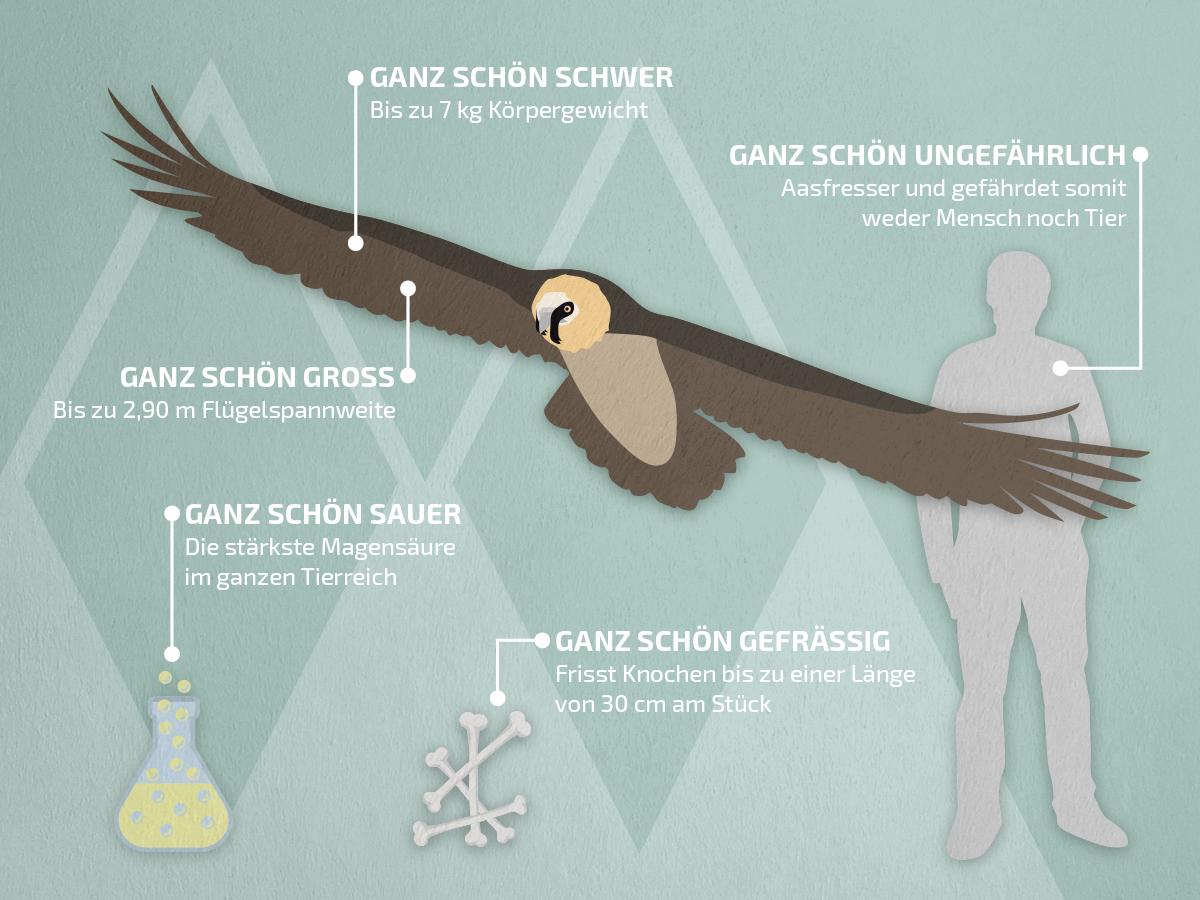

Appearance
Body length: 94 - 125 cm
wingspan: 2,3 - 2,9 m
Weight: 5 - 7 kg
With a wingspan of up to 2.9 meters, the bearded vulture is one of the largest flying birds in the world. Along with the Black Vulture, which is about the same size, it is the largest bird of prey in Europe. This makes it far larger than the golden eagle.
More information:
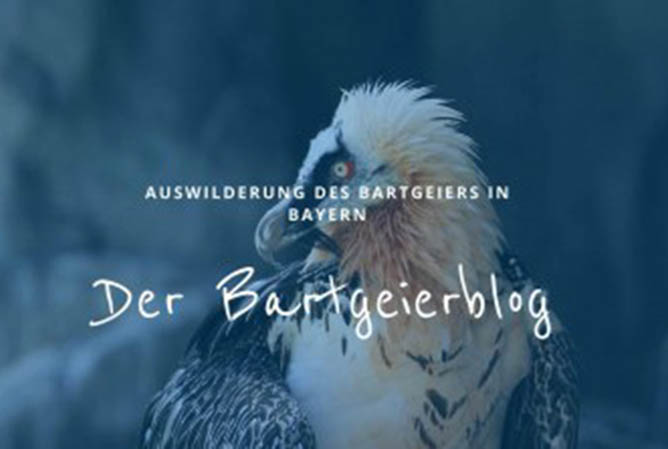
Current info!
Toni Wegscheider and David Schuhwerk have known each other for over 10 years from their time working together on the golden eagle project in Berchtesgaden National Park and share many common interests. Now they work together in the LBV bearded vulture reintroduction project in Bavaria and blog regularly about the latest news on the bearded vulture project in Berchtesgaden.
To the blog:
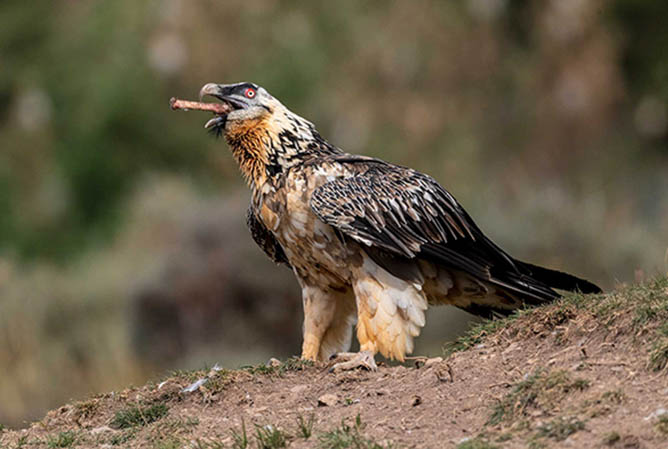
Food
Bearded vultures are pure scavengers and feed mainly on bones (about 85% of the diet). In this way, the bearded vulture avoids competition with other birds of prey and taps into a thoroughly rich food niche - no other vertebrate feeds almost exclusively on bones, which are extremely nutritious with a content of 12% protein, 16% fat and 23% minerals.
More information:
More beard animal themes:





